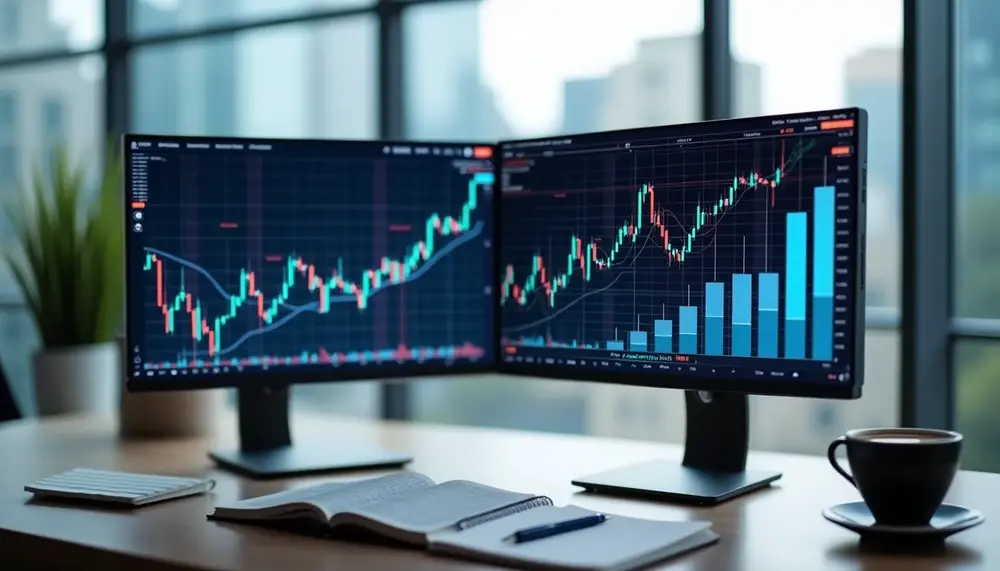Drawdown
Drawdown
What is a Drawdown in Trading?
A Drawdown is a term often heard in the world of trading and investing. In simple terms, a drawdown is the decrease or loss in your trading account from a trade or a series of trades.
The Importance of Understanding Drawdown
Understanding what a Drawdown is, is crucial for every trader. It helps to manage risks and prevent massive losses. Knowing the potential drawdown of the trading strategy, one can make smarter choices. It's all about balancing high returns with acceptable levels of risk.
How is Drawdown Calculated?
The calculation of a Drawdown is fairly straightforward. You need to identify the highest point your account has reached, then look at the lowest point it falls to from there. The difference between these two points, provided as a percentage, represents the drawdown. So, if your account peaked at $10,000 but dipped to $8,000, your Drawdown is 20%.
Types of Drawdowns
In trading, there are usually two types of Drawdowns: strategy drawdown and systems drawdown. Strategy Drawdown happens with a trading system that produces losses for several trades in a row. A System Drawdown, on the other hand, occurs when a trader strays from their trading system.
How to Manage Drawdown
While there are no sure-fire ways to completely avoid Drawdown, there are several strategies to manage it. Sticking to your trading plan, diversifying your investments, and using stop-loss orders can help manage your overall risk and reduce drawdowns. Education is key, so always strive to learn more!
Blog Posts with the term: Drawdown

Backtesting is crucial in crypto trading, allowing traders to test strategies with historical data before risking real capital and adapting them based on performance across various market conditions. Traders use manual, automated, or software-assisted methods for backtesting to optimize their...

A crypto trading system is a structured approach to making trade decisions in the volatile cryptocurrency market, taking into account factors like market sentiment and regulatory news. It involves selecting suitable assets based on liquidity and risk tolerance, employing technical...

Cryptocurrency trading requires understanding the 24/7 market, blockchain technology, and factors influencing prices; choosing a secure platform is essential. Balancing risk tolerance with financial goals is key to strategy development, while technical analysis uses chart patterns and indicators for price...

The integration of Artificial Intelligence (AI) in cryptocurrency market analysis is revolutionizing the way investors and traders analyze digital assets by using algorithms and machine learning to process large datasets quickly and accurately, thus providing insights that surpass human capabilities....

Cryptocurrency trading involves buying and selling digital assets to profit from price changes, relying on blockchain technology for secure transactions. Traders must understand market liquidity, terminology, and order types before developing a strategy based on personal risk tolerance and goals;...

Bitcoin trading involves buying and selling Bitcoin to profit from price fluctuations, using a decentralized network called the blockchain. Traders must understand market supply and demand, terminology like 'blockchain' and 'wallet', as well as technological updates that can affect prices....

Bitcoin trading involves buying and selling bitcoin on exchanges to profit from price fluctuations, requiring an understanding of market orders, security practices, and staying informed about market trends. Traders must navigate technical analysis, sentiment gauging, geopolitical impacts, diversification strategies for...

This article provides an introduction to the importance of analyzing Bitcoin trading results, outlining steps and tools for traders to interpret their trade history and improve strategies. It emphasizes setting up a detailed trading journal and tracking key metrics like...

The EMA trading strategy in crypto uses the Exponential Moving Average to capitalize on quick price movements by identifying potential trend reversals, with EMAs acting as dynamic support and resistance levels. Traders choose different EMA time spans based on their...

Bitcoin trading patterns are visual indicators of market sentiment that help predict price movements, and understanding them is crucial for informed cryptocurrency trading. These patterns include formations like Double Tops and Bottoms, Flags, Pennants, Triangles, Rectangles, and the Head and...

Cryptocurrency trading involves understanding blockchain technology, the difference between fiat and digital currencies, market volatility, and various trade types. A successful strategy requires setting clear goals, interpreting market indicators, managing risks with stop-loss orders and diversification, and continuous learning to...

Decentralized Finance (DeFi) quantitative trading combines transparency, real-time data, and algorithmic precision to revolutionize financial markets by enabling innovative strategies like statistical arbitrage and leveraging on-chain data for predictive accuracy. This paradigm shift democratizes finance, offering opportunities for both experts...

